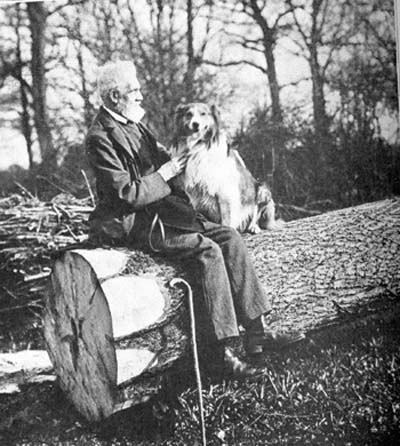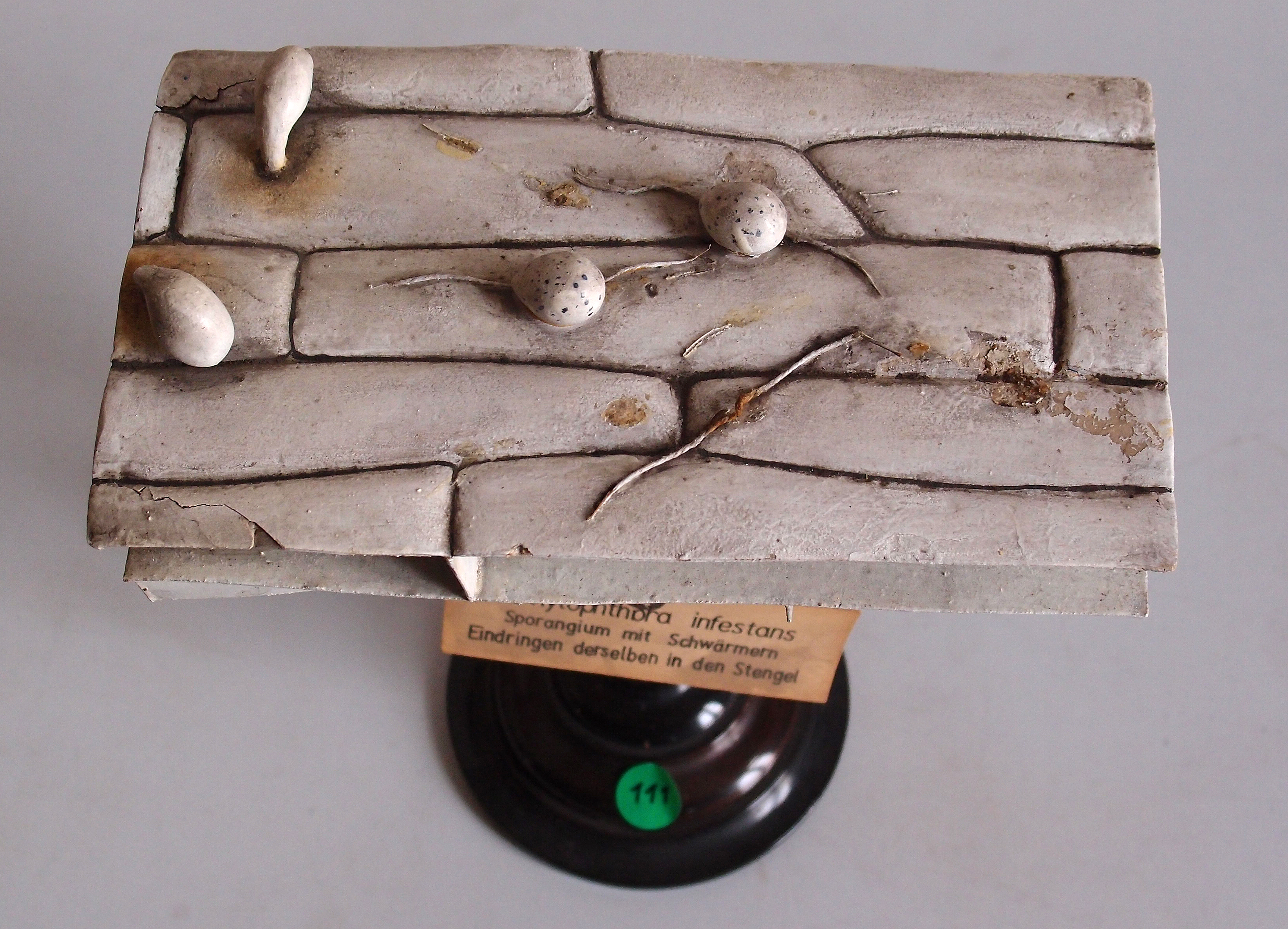|
Worthington George Smith
Worthington George Smith (25 March 1835 – 27 October 1917) was an English cartoonist and illustrator, archaeologist, plant pathologist, and mycologist. Background and career Worthington G. Smith was born in Shoreditch, London, the son of a civil servant. He received an elementary education at a local school and was then apprenticed as an architect. He married Henrietta White in 1856 and the couple had seven children, only three of whom survived childhood.''Oxford Dictionary of National Biography'' http://www.oxforddnb.com Smith worked for the architect Sir Horace Jones, becoming an expert draughtsman and a member of the Architectural Association.Bedfordshire Libraries: Worthington George Smith http://www.galaxy.bedfordshire.gov.uk/webingres/bedfordshire/vlib/0.digitised_resources/dunstable_digitisation_people_smith_about.htm In 1861, however, he left the profession (having been required to design drains for Sir Horace) and embarked on a second career as a freelance illustrator ... [...More Info...] [...Related Items...] OR: [Wikipedia] [Google] [Baidu] |
Worthington George Smith00
Worthington may refer to: People * Worthington (surname) * Worthington family, a British noble family Businesses * Worthington Brewery, also known as Worthington's * Worthington Corporation, founded as a pump manufacturer in 1845, later a diversified manufacturer, merged into Studebaker-Worthington in 1967 * Worthington Industries, a metals manufacturing company founded in 1955 Places Canada *Worthington, Ontario England * Worthington, Greater Manchester *Worthington, Leicestershire United States *Worthington, Indiana *Worthington, Iowa *Worthington, Kentucky *Worthington, Louisville, Kentucky, a neighborhood *Worthington, Massachusetts *Worthington, Minnesota *Worthington, Missouri *Worthington, Ohio *Worthington, Pennsylvania *Worthington, West Virginia Other * Worthington, a clothing line from J. C. Penney * Worthington College, a fictional school in the television show ''Dawson's Creek ''Dawson's Creek'' is an American teen drama television series about the lives ... [...More Info...] [...Related Items...] OR: [Wikipedia] [Google] [Baidu] |
Agarics
An agaric () is a type of fungus fruiting body characterized by the presence of a pileus (cap) that is clearly differentiated from the stipe (stalk), with lamellae (gills) on the underside of the pileus. In the UK, agarics are called "mushrooms" or "toadstools". In North America they are typically called "gilled mushrooms". "Agaric" can also refer to a basidiomycete species characterized by an agaric-type fruiting body. Archaically, agaric meant 'tree-fungus' (after Latin ''agaricum''); however, that changed with the Linnaean interpretation in 1753 when Linnaeus used the generic name ''Agaricus'' for gilled mushrooms. Most species of agaricus belong to the order Agaricales in the subphylum Agaricomycotina. The exceptions, where agarics have evolved independently, feature largely in the orders Russulales, Boletales, Hymenochaetales, and several other groups of basidiomycetes. Old systems of classification placed all agarics in the Agaricales and some (mostly older) sources use ... [...More Info...] [...Related Items...] OR: [Wikipedia] [Google] [Baidu] |
Hereford
Hereford () is a cathedral city, civil parish and the county town of Herefordshire, England. It lies on the River Wye, approximately east of the border with Wales, south-west of Worcester and north-west of Gloucester. With a population of 53,112 in 2021 it is by far the largest settlement in Herefordshire. An early town charter from 1189, granted by Richard I of England, describes it as "Hereford in Wales". Hereford has been recognised as a city since time immemorial, with the status being reconfirmed as recently as October 2000. It is now known chiefly as a trading centre for a wider agricultural and rural area. Products from Hereford include cider, beer, leather goods, nickel alloys, poultry, chemicals and sausage rolls, as well as the famous Hereford breed of cattle. Toponymy The Herefordshire edition of Cambridge County Geographies states "a Welsh derivation of Hereford is more probable than a Saxon one" but the name "Hereford" is also said to come from the Angl ... [...More Info...] [...Related Items...] OR: [Wikipedia] [Google] [Baidu] |
Woolhope Naturalists' Field Club
The Woolhope Naturalists' Field Club (or simply the Woolhope Club) is a society devoted to the natural history, geology, archaeology, and history of Herefordshire, England. Founded in 1851, it has had many notable members and played an important early role in the history of mycology in Britain. Foundation The Woolhope Naturalists' Field Club was founded in 1851 "for the practical study, in all its branches, of the Natural History of Herefordshire and the districts immediately adjacent". The club was and still is based in the city of Hereford, but took its name from the Woolhope Dome, an outcrop of Silurian rocks around the village of Woolhope to the south-east of the city. The club's first field meeting was held in the Woolhope area.Anon. (1856). ''Transactions of the Woolhope Naturalists' Field Club'' 1. The club's ''Transactions'' have been published regularly since 1856, and early issues suggest that the membership took an interest not only in geology, but in fossils, botany ... [...More Info...] [...Related Items...] OR: [Wikipedia] [Google] [Baidu] |
John Ramsbottom (mycologist)
John Ramsbottom (15 October 1885 – 14 December 1974) was a British mycologist. Biography Ramsbottom was born in Manchester. He graduated from Emmanuel College, Cambridge, and joined the staff of the British Museum of Natural History in 1910. From 1917 to 1919, he served in Salonika, Greece, first as a civilian protozoologist, then as captain in the Royal Army Medical Corps. He was appointed a Member of the Order of the British Empire in the 1919 New Year Honours, "for valuable services rendered in connection with Military Operations in Salonika," and later appointed an Officer of the Order. From 1929 to 1950, he was Keeper of Botany at the British Museum. He served as general secretary and twice as president of the British Mycological Society, and was long editor of its ''Transactions''. He was president of the Quekett Microscopical Club from 1928 to 1931 and was elected an Honorary Member in 1937. He was president of the Linnean Society from 1937 to 1940 and was awarded th ... [...More Info...] [...Related Items...] OR: [Wikipedia] [Google] [Baidu] |
Natural History Museum, London
The Natural History Museum in London is a museum that exhibits a vast range of specimens from various segments of natural history. It is one of three major museums on Exhibition Road in South Kensington, the others being the Science Museum and the Victoria and Albert Museum. The Natural History Museum's main frontage, however, is on Cromwell Road. The museum is home to life and earth science specimens comprising some 80 million items within five main collections: botany, entomology, mineralogy, palaeontology and zoology. The museum is a centre of research specialising in taxonomy, identification and conservation. Given the age of the institution, many of the collections have great historical as well as scientific value, such as specimens collected by Charles Darwin. The museum is particularly famous for its exhibition of dinosaur skeletons and ornate architecture—sometimes dubbed a ''cathedral of nature''—both exemplified by the large ''Diplodocus'' cast that domina ... [...More Info...] [...Related Items...] OR: [Wikipedia] [Google] [Baidu] |
James Sowerby
James Sowerby (21 March 1757 – 25 October 1822) was an English naturalist, illustrator and mineralogist. Contributions to published works, such as ''A Specimen of the Botany of New Holland'' or ''English Botany'', include his detailed and appealing plates. The use of vivid colour and accessible texts were intended to reach a widening audience in works of natural history. Biography James Sowerby was born in Lambeth, London, his parents were named John and Arabella. Having decided to become a painter of flowers his first venture was with William Curtis, whose ''Flora Londinensis'' he illustrated. Sowerby studied art at the Royal Academy and took an apprenticeship with Richard Wright. He married Anne Brettingham De Carle and they were to have three sons: James De Carle Sowerby (1787–1871), George Brettingham Sowerby I (1788–1854) and Charles Edward Sowerby (1795–1842), the Sowerby family of naturalists. His sons and theirs were to contribute and continue the enormous vo ... [...More Info...] [...Related Items...] OR: [Wikipedia] [Google] [Baidu] |
Anton De Bary
Heinrich Anton de Bary (26 January 183119 January 1888) was a German surgeon, botanist, microbiologist, and mycologist (fungal systematics and physiology). He is considered a founding father of plant pathology (phytopathology) as well as the founder of modern mycology. His extensive and careful studies of the life history of fungi and contribution to the understanding of algae and higher plants were landmarks of biology. Early life and education Born in Frankfurt, Anton de Bary was one of ten children born to physician August Theodor de Bary (1802–1873) and Emilie Meyer de Bary. His father encouraged him to join the excursions of the active group of naturalists who collected specimens in the nearby countryside. De Bary’s youthful interest in plants and in examination of fungi and algae were inspired by George Fresenius, a physician, who also taught botany at Senckenberg Institute. Fresenius was an expert on thallophytes. In 1848, de Bary graduated from a gymnasium at Fr ... [...More Info...] [...Related Items...] OR: [Wikipedia] [Google] [Baidu] |
Royal Horticultural Society
The Royal Horticultural Society (RHS), founded in 1804 as the Horticultural Society of London, is the UK's leading gardening charity. The RHS promotes horticulture through its five gardens at Wisley (Surrey), Hyde Hall (Essex), Harlow Carr (North Yorkshire), Rosemoor (Devon) and Bridgewater (Greater Manchester); flower shows including the Chelsea Flower Show, Hampton Court Palace Flower Show, Tatton Park Flower Show and Cardiff Flower Show; community gardening schemes; Britain in Bloom and a vast educational programme. It also supports training for professional and amateur gardeners. the president was Keith Weed and the director general was Sue Biggs CBE. History Founders The creation of a British horticultural society was suggested by John Wedgwood (son of Josiah Wedgwood) in 1800. His aims were fairly modest: he wanted to hold regular meetings, allowing the society's members the opportunity to present papers on their horticultural activities and discoveries, to enc ... [...More Info...] [...Related Items...] OR: [Wikipedia] [Google] [Baidu] |
Great Famine (Ireland)
The Great Famine ( ga, an Gorta Mór ), also known within Ireland as the Great Hunger or simply the Famine and outside Ireland as the Irish Potato Famine, was a period of starvation and disease in Ireland from 1845 to 1852 that constituted a historical social crisis which subsequently had a major impact on Irish society and history as a whole. With the most severely affected areas in the west and south of Ireland, where the Irish language was dominant, the period was contemporaneously known in Irish as , literally translated as "the bad life" (and loosely translated as "the hard times"). The worst year of the period was 1847, which became known as "Black '47".Éamon Ó Cuív – the impact and legacy of the Great Irish Famine During the Great Hunger, roughly 1 million people died and more than 1 million Irish diaspora, fled the country, causing the country's population to fall by 20–25% (in some towns falling as much as 67%) between 1841 and 1871.Carolan, MichaelÉireann's ... [...More Info...] [...Related Items...] OR: [Wikipedia] [Google] [Baidu] |
Phytophthora Infestans
''Phytophthora infestans'' is an oomycete or water mold, a fungus-like microorganism that causes the serious potato and tomato disease known as late blight or potato blight. Early blight, caused by ''Alternaria solani'', is also often called "potato blight". Late blight was a major culprit in the 1840s European, the 1845–1852 Irish, and the 1846 Highland potato famines. The organism can also infect some other members of the Solanaceae. The pathogen is favored by moist, cool environments: sporulation is optimal at in water-saturated or nearly saturated environments, and zoospore production is favored at temperatures below . Lesion growth rates are typically optimal at a slightly warmer temperature range of . Etymology The genus name ''Phytophthora'' comes from the Greek –(), meaning : "plant" – plus the Greek (), meaning : "decay, ruin, perish". The species name ''infestans'' is the present participle of the Latin verb , meaning : "attacking, destroying", from which we ... [...More Info...] [...Related Items...] OR: [Wikipedia] [Google] [Baidu] |




